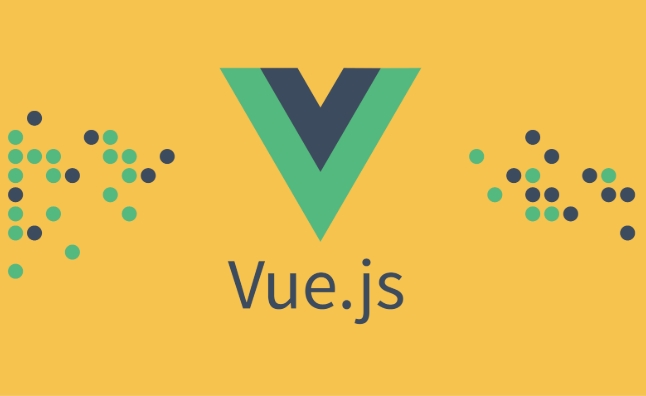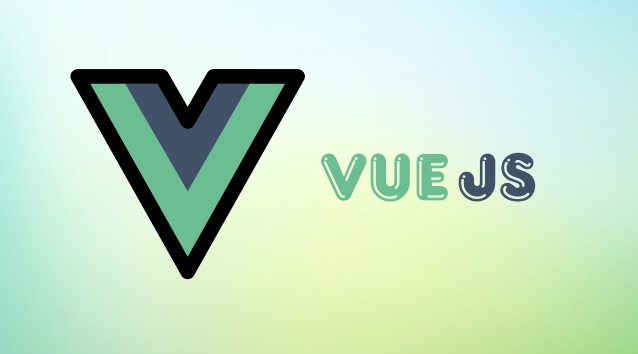To implement scoped styles in Vue using CSS modules, you need to enable and configure them in the build tool; in Vite or Vue CLI, you only need to write the styles within the <style module> tag, the class name will automatically compile to a unique hash and accessed through the $style object to avoid global conflicts, and support preprocessors and named modules, but not dynamic class names.

To use CSS Modules for scoped styling in Vue, you need to enable and configure them in your project — especially if you're using a build setup like Vue CLI, Vite, or Webpack. CSS Modules allows you to write CSS that's automatically scoped to components, avoiding global style conflicts without relying on scoped attributes.

Here's how to use CSS Modules effectively in a Vue project:
? Enable CSS Modules in Your Build Tool
In Vite (most common now):
Vite supports CSS Modules by default. Just name your CSS file with the pattern:
[name].module.css or [name].module.scss

Example:
<!-- MyComponent.vue -->
<template>
<div :class="$style.container">
<h1 :class="$style.title">Hello World</h1>
</div>
</template>
<style module>
.container {
padding: 20px;
background-color: #f5f5f5;
}
.title {
color: #333;
font-size: 24px;
}
</style> With this naming convention ( module in the filename or module in the <style> tag), Vite treats the styles as CSS Modules. The compiled class names will be unique and mapped via $style .

? You can also use
.module.scss,.module.less, etc., for pre-processors.
In Vue CLI / Webpack
Vue CLI also supports CSS Modules out of the box when using the correct naming or configuration.
Use a file named:
MyComponent.module.css
Then import it in your component:
<template>
<div :class="styles.container">
<h1 :class="styles.title">Hello</h1>
</div>
</template>
<script>
import styles from './MyComponent.module.css';
export default {
name: 'MyComponent',
data() {
return { styles };
}
};
</script> Alternatively, use <style module> in .vue files (recommended):
<style module>
.container {
margin: 1rem;
}
.title {
font-weight: bold;
}
</style> The compiled class names are exposed via the $style computed property (or you can name the module):
<template>
<div :class="myStyle.container">
<h1 :class="myStyle.title">Custom Module Name</h1>
</div>
</template>
<style module="myStyle">
/* ... */
</style> This gives you a local variable myStyle with the mapped class names.
? How CSS Modules Scope Styles
CSS Modules don't rely on attribute selectors like scoped . Instead:
- Class names are compiled into unique hashes (eg,
container_xyz123) - Only the original
.container→container_xyz123mapping is exposed - No risk of naming collisions
- Styles are still global in the DOM, but class names are unique
So this:
.title { color: red; }Becomes:
.title_xyz123 { color: red; } And $style.title returns "title_xyz123" .
? Tips & Best Practices
- Use
<style module>in.vuefiles for co-location and simplicity - Name your module if you have multiple style imports:
<style module="btn">/* ... */</style> <style module="icon">/* ... */</style>
- Combine with pre-processors:
<style module lang="scss"> .container { .title { font-size: 2rem; } } </style> - You can still use global styles when needed:
:global(.global-class) { color: green; } - Avoid
@importin CSS Modules if possible — better to import in JS or Vue files - Can't use dynamic class names like
:class="'title'"— must use$style.title - Slightly more verbose than regular classes
- Not as intuitive for designers or new devs
?? Limitations
But for large apps where style encapsulation matters, CSS Modules offer a robust, build-time solution.
Basically, just use <style module> in your Vue components, and access classes via $style . No extra config needed in modern setups like Vite or Vue CLI.
The above is the detailed content of How to use CSS Modules for scoped styling in Vue?. For more information, please follow other related articles on the PHP Chinese website!

Hot AI Tools

Undress AI Tool
Undress images for free

Undresser.AI Undress
AI-powered app for creating realistic nude photos

AI Clothes Remover
Online AI tool for removing clothes from photos.

Clothoff.io
AI clothes remover

Video Face Swap
Swap faces in any video effortlessly with our completely free AI face swap tool!

Hot Article

Hot Tools

Notepad++7.3.1
Easy-to-use and free code editor

SublimeText3 Chinese version
Chinese version, very easy to use

Zend Studio 13.0.1
Powerful PHP integrated development environment

Dreamweaver CS6
Visual web development tools

SublimeText3 Mac version
God-level code editing software (SublimeText3)
 How to develop a complete Python Web application?
May 23, 2025 pm 10:39 PM
How to develop a complete Python Web application?
May 23, 2025 pm 10:39 PM
To develop a complete Python Web application, follow these steps: 1. Choose the appropriate framework, such as Django or Flask. 2. Integrate databases and use ORMs such as SQLAlchemy. 3. Design the front-end and use Vue or React. 4. Perform the test, use pytest or unittest. 5. Deploy applications, use Docker and platforms such as Heroku or AWS. Through these steps, powerful and efficient web applications can be built.
 Laravel Vue.js single page application (SPA) tutorial
May 15, 2025 pm 09:54 PM
Laravel Vue.js single page application (SPA) tutorial
May 15, 2025 pm 09:54 PM
Single-page applications (SPAs) can be built using Laravel and Vue.js. 1) Define API routing and controller in Laravel to process data logic. 2) Create a componentized front-end in Vue.js to realize user interface and data interaction. 3) Configure CORS and use axios for data interaction. 4) Use VueRouter to implement routing management and improve user experience.
 How to separate the front and back end of wordpress
Apr 20, 2025 am 08:39 AM
How to separate the front and back end of wordpress
Apr 20, 2025 am 08:39 AM
It is not recommended to directly modify the native code when separating WordPress front and back ends, and it is more suitable for "improved separation". Use the REST API to obtain data and build a user interface using the front-end framework. Identify which functions are called through the API, which are retained on the backend, and which can be cancelled. The Headless WordPress mode allows for a more thorough separation, but it is more cost-effective and difficult to develop. Pay attention to security and performance, optimize API response speed and cache, and optimize WordPress itself. Gradually migrate functions and use version control tools to manage code.
 How to push the video stream of Hikvision camera SDK to the front-end Vue project for real-time playback?
Apr 19, 2025 pm 07:42 PM
How to push the video stream of Hikvision camera SDK to the front-end Vue project for real-time playback?
Apr 19, 2025 pm 07:42 PM
How to push video streams from Hikvision camera SDK to front-end Vue project? During the development process, you often encounter videos that need to be captured by the camera to be circulated...
 How to work and configuration of front-end routing (Vue Router, React Router)?
May 20, 2025 pm 07:18 PM
How to work and configuration of front-end routing (Vue Router, React Router)?
May 20, 2025 pm 07:18 PM
The core of the front-end routing system is to map URLs to components. VueRouter and ReactRouter realize refresh-free page switching by listening for URL changes and loading corresponding components. The configuration methods include: 1. Nested routing, allowing the nested child components in the parent component; 2. Dynamic routing, loading different components according to URL parameters; 3. Route guard, performing logic such as permission checks before and after route switching.
 What is the significance of Vue's reactivity transform (experimental, then removed) and its goals?
Jun 20, 2025 am 01:01 AM
What is the significance of Vue's reactivity transform (experimental, then removed) and its goals?
Jun 20, 2025 am 01:01 AM
ReactivitytransforminVue3aimedtosimplifyhandlingreactivedatabyautomaticallytrackingandmanagingreactivitywithoutrequiringmanualref()or.valueusage.Itsoughttoreduceboilerplateandimprovecodereadabilitybytreatingvariableslikeletandconstasautomaticallyreac
 What are the core differences between Vue.js and React in componentized development?
May 21, 2025 pm 08:39 PM
What are the core differences between Vue.js and React in componentized development?
May 21, 2025 pm 08:39 PM
The core differences between Vue.js and React in component development are: 1) Vue.js uses template syntax and option API, while React uses JSX and functional components; 2) Vue.js uses responsive systems, React uses immutable data and virtual DOM; 3) Vue.js provides multiple life cycle hooks, while React uses more useEffect hooks.
 How can internationalization (i18n) and localization (l10n) be implemented in a Vue application?
Jun 20, 2025 am 01:00 AM
How can internationalization (i18n) and localization (l10n) be implemented in a Vue application?
Jun 20, 2025 am 01:00 AM
InternationalizationandlocalizationinVueappsareprimarilyhandledusingtheVueI18nplugin.1.Installvue-i18nvianpmoryarn.2.CreatelocaleJSONfiles(e.g.,en.json,es.json)fortranslationmessages.3.Setupthei18ninstanceinmain.jswithlocaleconfigurationandmessagefil






